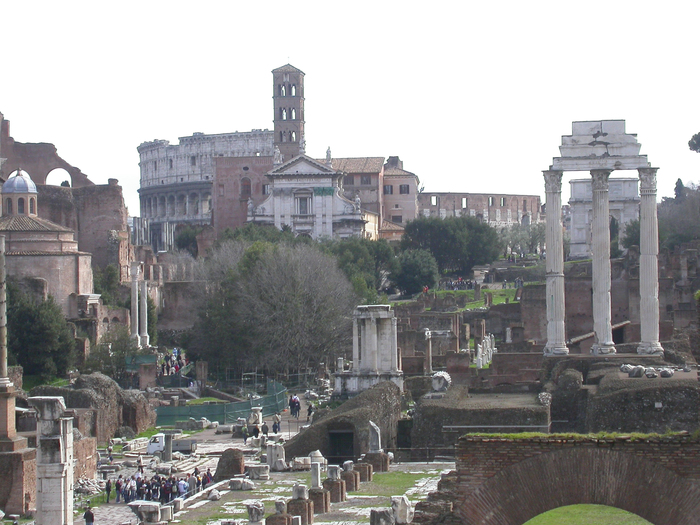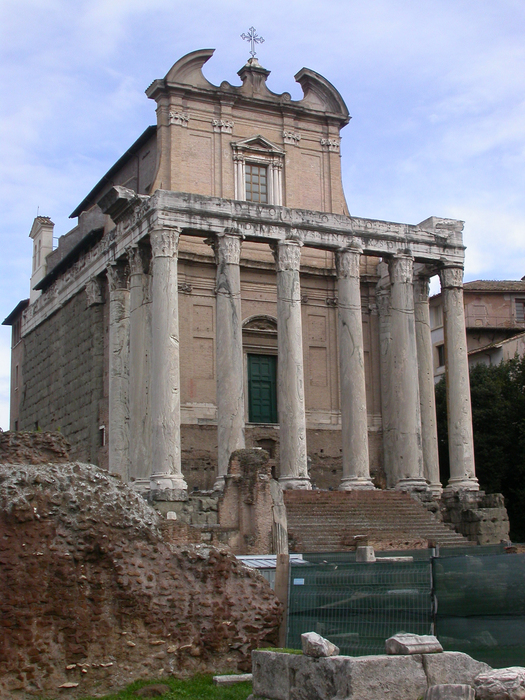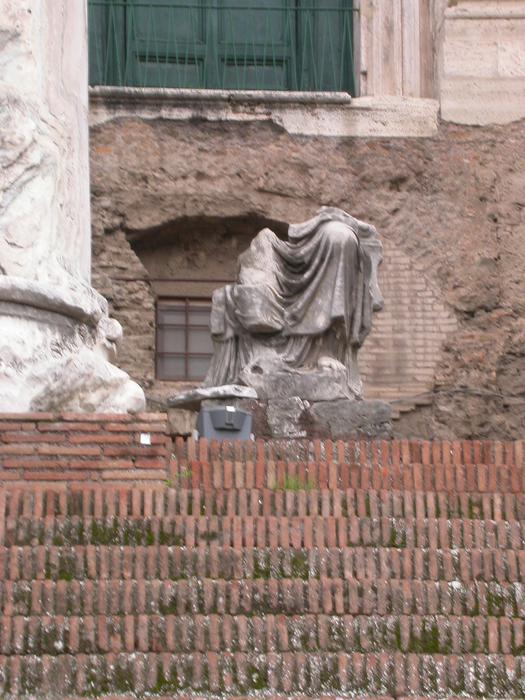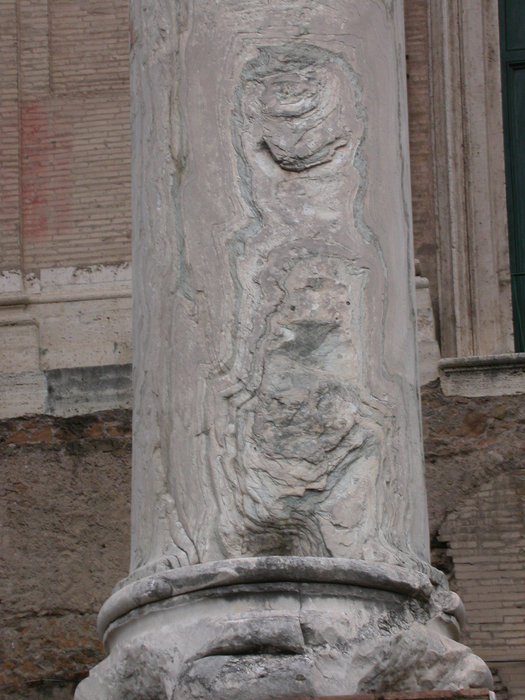
A view of the East end of the Forum. The round structure on
the far left is the Round Temple of Romulus. The partial wall
behind it is the edge of the Basilica of Maxentius. The Colossium
dominates the background, with the new
Church of
Saint Francesca Romana in front of it. (This church was first
built around 900 A.D., on the site of the Oratory of St. Peter and
St. Paul, c. 760 A.D. It was reconstructed in 1216 and 1615.) In
the middle of the photo is the Temple of Vespa, with the Temple of
Julius Caesar immediately in front of it. The Basilica of Julia
is in the foreground. The three columns to the right are what
remains of the Temple of Castor and Pollux. It was originally
built to fulfill a battlefield promise of Aulus Postuminus Albinus
to build a temple to the twins if Rome was victorius in the battle
at Lake Regillus in 495 B.C. Legend has it that the twins
appeared on the battlefield as two able horsemen who aided the
Romans, and appeared again immediately after the battle in the
Forum, watering their horses. The temple stands at the spot where
they are said to have appeared in the Forum.
The original temple had a single central room, which was paved in mosaics. The columns formed a covered walkway that completely surrounded the temple, with three rows of columns in the front and a single row on all other sides. The twin statues of Castor and Pollux, with their horses, are now situated on the Piazza del Campidoglio. The current remains of the temple were probably from a reconstruction by Tiberius in 6 A.D.



